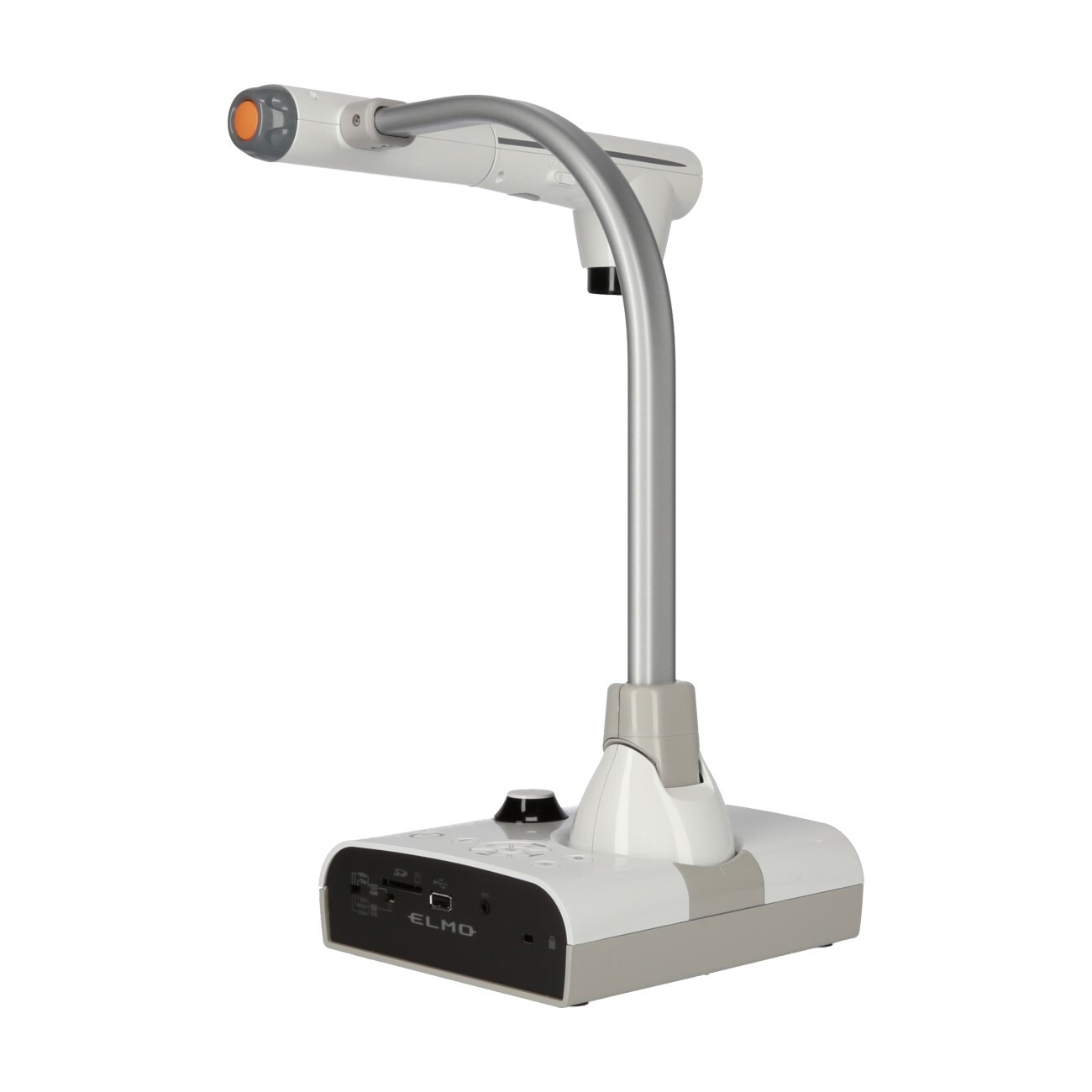











































- Resolution 1920 x 1080 Full HD
- Camera resolution 3.4 MP
- Optical Zoom 12
- Focus type Manual & automatic focus


Frequently purchased together
Product information
The ELMO L-12iD is specially designed to meet the demands of teachers in class.
Easy to use, flexible and robust – these features made the ELMO L-12iD the best-selling visualiser in Europe!
With the high-quality camera and its immense zoom, you can present all your materials in a lively, real life, close up image. 96x zoom enlargement enables everyone in class to focus on the smallest detail. Just connect the ELMO visualiser to a projector and within seconds you are ready to go – with or without PC.
In addition, the L-12iD can work as a UVC camera (USB video class). This allows an easy integration in other presentation systems like interactive whiteboards. Infinite possibilities not only for schools but for any institution public or private that choose to use it. With more and more companies are using visualisers for their presentations the L12id is the ideal visualiser solution.
- Intuitive operation - The L-12iD is as easy to use as an OHP but offers much more functions. Plug it in, connect it to a projector and start your lesson. Simply place the object you want to show under the camera and rotate the camera, are to project from any angle.
- Enlarge small objects - With the L-12iD’s high magnification features, objects can be enlarged up to 96x. The 12x optical and 8x digital zoom create a clear and distortion-free image of even the tiniest detail.
- L-12iD & microscope - In science classes you can experience the L-12iD at it’s best. Perfectly experiments are shown to everyone in class. With the optional microscope attachment the whole class is looking through one microscope.
- Everything under control - With the unique remote control you can use all functions of the visualizer within a 7-meter range.
- Start video recording and playback, Zoom and focus, Access storage devices or use one of the presentation tools like mask, highlight or scroll function
- Pictures from any angle - The L-12iD can capture images from all directions, thanks to an adjustable camera arm that can be swiveled to broaden the scope of classroom presentations. The solidly constructed camera arm holds its position and is easy to operate for both left- and right-handed users.
- Capture images and record videos with audio - Both still images (JPEG) and audio video files (MP4) can be saved on USB flash drive or SD memory card for future use. Files may also be saved to a computer using the ELMO Interactive Toolbox software.
- ELMO interactive - Partner the L-12iD with the ELMO CRA-1 wireless tablet or CRB-1 interactive pen for dynamic and engaging lessons. Teachers can annotate live images captured by the L-12iD while the image is displayed on a big screen – totally PC free!
Technical data
| Name | Elmo L-12iD Interactive Document Camera |
|---|---|
| Article number | 2010041 |
| GTIN/EAN | 4560353281243 |
| Manufacturer SKU | L-12iD |
| Brand | ELMO |
| Product Type | Visualizer |
| Product Series | Elmo L-12 Series |
| Resolution | 1920 x 1080 Full HD |
| Frames per Second | 30 fps |
| Focus type | Manual & automatic focus |
| Digital Zoom | 8 |
| Optical Zoom | 12 |
| Camera resolution | 3.4 MP |
| Camera sensor | 1/2.8“ CMOS |
| Inputs | 1x HDMI , 1x USB-A , 1x VGA |
| Outputs | 1x 3,5mm Jack , 1x HDMI , 1x VGA |
| Product width | 35.5 cm |
| Product height | 42.65 cm |
| Product depth | 37.35 cm |
| Weight | 3.2 kg |
| Colour | White |
| Condition | New |
| Warranty | 60 Month |
| Warranty type | Bringin service Service and support information |
Product safety
| Person responsible for the EU |
|---|
| ELMO Europe SAS |
| Tour Voltaire 1 Place des Degrés |
| 92800 Puteaux |
| France |
| 33 (0)1 74 54 49 81 |
| info@elmoeruope.com |







